
The Sagrada Familia, a stunning basilica in Barcelona, is not just an architectural wonder but a symbol of the city’s rich cultural heritage. Designed by the visionary architect Antoni Gaudí, this masterpiece reflects a unique blend of Gothic and Art Nouveau styles that continues to captivate millions of visitors each year.
In exploring The Fascinating History of Sagrada Familia: Barcelona's Iconic Masterpiece, we delve into the story of its inception, the challenges faced during its construction, and the ongoing efforts to complete this extraordinary project. With each stone laid and detail crafted, Gaudí's dream slowly transforms into a reality, making it one of the most remarkable landmarks in the world.
The Visionary Architect Behind Sagrada Familia: Antoni Gaudí's Genius
Antoni Gaudí, born in 1852 in Reus, Catalonia, is celebrated as one of the most influential figures in architecture. His naturalistic approach and profound understanding of geometry allowed him to create structures that not only defy convention but also harmonize with nature. Gaudí's innovative techniques included the use of hyperbolic paraboloids and catenary arches, which are evident in the design of the Sagrada Familia, showcasing his genius in merging art and engineering.
Beyond mere aesthetics, Gaudí infused his work with deep spiritual meaning. The Sagrada Familia is a testament to his fascination with the divine, as he sought to convey biblical stories through the architecture itself. The basilica features intricate facades, each representing key events in the life of Christ, making it not just a building, but a storytelling masterpiece. His unique vision was also influenced by his love for nature, evident in the organic shapes and colors that imitate flora and fauna.
Gaudí's dedication to the Sagrada Familia was unwavering, even as he faced numerous challenges during its construction. He famously declared, "My client is not in a hurry," referring to God as the ultimate architect behind the project. This philosophy reflects his belief in the importance of patience and meticulous craftsmanship. To illustrate his commitment, consider the following aspects of his work:
- Innovative Materials: Use of local stone and recycled materials.
- Environmental Integration: Designs that blend with the surrounding landscape.
- Symbolic Elements: Each feature carries theological significance.
Even after Gaudí's tragic death in 1926, his vision for the Sagrada Familia lives on through the efforts of numerous architects who continue to work towards its completion. The basilica, still under construction, stands as a symbol of perseverance and artistic ambition. Gaudí's legacy is not just in the stones of the Sagrada Familia but in the inspiration he continues to provide to architects and artists around the world.
Exploring the Symbolism of Sagrada Familia: A Deep Dive into Its Design
The Sagrada Familia is rich in symbolism, reflecting both its spiritual intent and Gaudí's unique architectural vision. Its design is replete with elements that embody the Christian faith, such as the three grand façades—Nativity, Passion, and Glory. Each façade tells a different story, highlighting significant moments in the life of Jesus and representing the journey from birth to resurrection.
In addition to its façades, the interior of the basilica is designed to evoke a sense of tranquility and natural beauty. The columns are structured to resemble trees, with branches reaching towards the heavens. This organic design not only enhances the aesthetic appeal but also symbolizes the connection between nature and spirituality, reinforcing Gaudí's belief that architecture should harmonize with the natural world.
The use of light within the Sagrada Familia also carries deep meaning. The stained glass windows are strategically placed to cast colored light throughout the interior, creating an ethereal atmosphere. This interplay of light and color serves as a metaphor for divine presence, illustrating how light can transform and uplift the human spirit.
Moreover, Gaudí incorporated a number of numerical symbols into the design, reflecting his fascination with geometry and mathematics. For instance, the number 12, representing the apostles, is a recurring theme throughout the basilica. This incorporation of numbers not only adds aesthetic depth but also serves to connect the physical structure with spiritual significance, creating a profound experience for visitors.
The Construction Journey of Sagrada Familia: A Timeline of Progress
The construction journey of the Sagrada Familia has been a remarkable tale of vision, perseverance, and innovation since its groundbreaking in 1882. Initially designed by Francisco de Paula del Villar, Antoni Gaudí took over the project in 1883 and completely transformed its direction. His unique style and adherence to natural forms inspired a generation of architects and artists, ensuring that the Sagrada Familia would become a lasting symbol of Barcelona.
Throughout the years, the construction faced numerous challenges, including funding shortages and political upheaval. Despite these obstacles, progress continued steadily, with notable milestones such as:
- 1882: Groundbreaking of the basilica.
- 1883: Gaudí assumes responsibility for the project.
- 1926: Gaudí's tragic death, leaving the project unfinished.
- 2010: The Sagrada Familia receives consecration by Pope Benedict XVI.
In recent years, technological advancements and the dedication of various architects have accelerated the construction process, bringing Gaudí's vision closer to fruition. The projected completion date is set for 2026, marking the centenary of Gaudí's death, reinforcing the spiritual and artistic significance of this iconic masterpiece.
As the Sagrada Familia evolves, it remains a testament to both Gaudí's genius and the collaborative efforts of many who have contributed to its construction over the decades. The ongoing journey of this basilica is not just about completing a building; it embodies the relentless pursuit of artistic excellence and the desire to connect with the divine through architecture.
Sagrada Familia's Architectural Styles: Blending Gothic and Art Nouveau
The architectural styles of the Sagrada Familia, primarily a fusion of Gothic and Art Nouveau, create a unique visual identity that sets it apart from other landmarks. While the Gothic influence is evident in the soaring spires and intricate ornamentation, Gaudí’s incorporation of organic forms and natural motifs aligns with the principles of Art Nouveau. This synthesis results in a structure that feels alive, blurring the lines between architecture and nature.
Gaudí's approach to architecture involved a deep understanding of geometric forms, which is apparent in the Sagrada Familia’s design. He utilized curved lines and hyperbolic shapes, allowing the basilica to resonate with the surrounding environment. The use of light as a design element further enhances this effect, creating an interplay of shadows and colors that change throughout the day, adding to the ethereal quality of the space.
Key elements that showcase this architectural blend include:
- Facades: Each facade reflects a different narrative style, combining Gothic verticality with the fluidity of Art Nouveau.
- Columns: Resembling trees, these structures support the basilica while enhancing the organic feel of the interior.
- Stained Glass: The windows not only serve a decorative purpose but also play a crucial role in the spiritual atmosphere, casting vivid colors throughout.
In essence, the Sagrada Familia is not just a testament to Gaudí's artistic vision; it embodies a harmonious dialogue between two distinct architectural styles. This masterpiece continues to inspire awe and admiration, drawing visitors into a world where architecture transcends traditional boundaries and connects with the divine.
The Cultural Significance of Sagrada Familia in Barcelona's History
The Sagrada Familia holds immense cultural significance in Barcelona, serving as a symbol of the city’s identity and its rich artistic heritage. This architectural marvel not only showcases the visionary genius of Antoni Gaudí but also reflects the historical context of Catalonia's desire for cultural expression during the late 19th and early 20th centuries. In this period, the region was experiencing a resurgence of nationalism, and the Sagrada Familia became a beacon of pride for the people of Barcelona.
Furthermore, the basilica's ongoing construction highlights the collaboration between artisans, architects, and engineers over generations, fostering a sense of community and shared purpose. The dedication to completing Gaudí’s vision speaks volumes about the local commitment to preserving cultural landmarks. As a result, Sagrada Familia has evolved into a symbol of resilience and hope, representing the enduring spirit of Barcelona and its people.
In addition to its architectural significance, the Sagrada Familia plays a pivotal role in the city's social fabric. It attracts millions of visitors each year, contributing to Barcelona's economy and promoting cultural tourism. The basilica is also a venue for various religious and cultural events, strengthening its connection to the community. This multifaceted role enhances its status not only as a architectural masterpiece but also as a vital component of Barcelona's contemporary culture.
Lastly, the Sagrada Familia embodies a fusion of artistic styles and spiritual meanings, making it a unique point of interest for both locals and tourists. The integration of Gothic and Art Nouveau influences serves as a testament to the city’s artistic evolution, while the intricate details and symbolism invite contemplation and exploration. This multifaceted significance solidifies the Sagrada Familia as an essential part of Barcelona's cultural legacy, immortalizing Gaudí’s vision for future generations.
Visiting Sagrada Familia: Tips for an Unforgettable Experience
When planning your visit to the Sagrada Familia, consider purchasing your tickets online in advance to avoid long queues. This iconic basilica attracts millions of visitors yearly, and being prepared can save you valuable time. Additionally, consider opting for a guided tour, which can enrich your experience by providing insights into Gaudí's vision and the basilica's intricate designs.
To make the most of your visit, consider the following tips:
- Best Time to Visit: Early mornings or late afternoons are ideal for fewer crowds and better lighting for photography.
- Explore the Surroundings: Take time to stroll around the basilica’s exterior to appreciate its stunning façades up close.
- Audio Guide: Utilize an audio guide to deepen your understanding of the architectural details and historical context.
Don't miss the opportunity to admire the interior's breathtaking stained glass windows, which create a vibrant play of light throughout the day. The best times to experience the changing colors are during midday when the sunlight filters through the glass, illuminating the space with a divine glow. This experience is a reflection of Gaudí's intention to create a connection between spirituality and nature.
Lastly, be sure to respect the sacred atmosphere of the Sagrada Familia by maintaining a quiet demeanor and refraining from taking flash photographs. This not only enhances your experience but also honors the spiritual significance of this architectural masterpiece. With these tips in mind, your visit to the Sagrada Familia will surely be an unforgettable journey into the heart of Barcelona's artistic heritage.
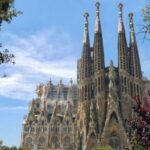 Explore the Majestic Sagrada Familia in Barcelona, Spain: Buy your Tickets Now!
Explore the Majestic Sagrada Familia in Barcelona, Spain: Buy your Tickets Now!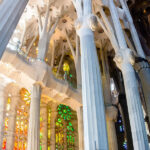 Discover the Breathtaking Staircase of the Sagrada Familia in Barcelona
Discover the Breathtaking Staircase of the Sagrada Familia in Barcelona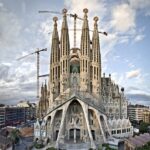 Discover the Fascinating Facts about Sagrada Familia in Barcelona, Spain
Discover the Fascinating Facts about Sagrada Familia in Barcelona, SpainIf you want to know other articles similar to The Fascinating History of Sagrada Familia: Barcelona's Iconic Masterpiece you can visit the category WHERE YOU CAN GO.
Leave a Reply


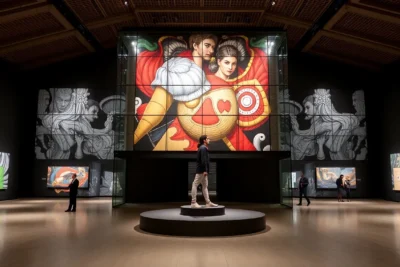
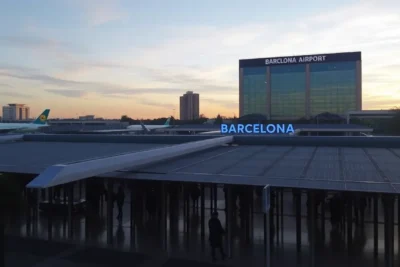

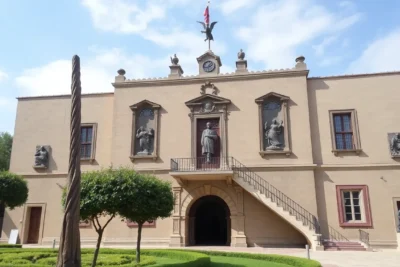

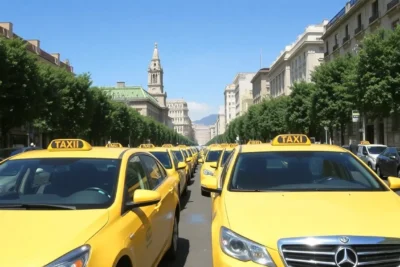
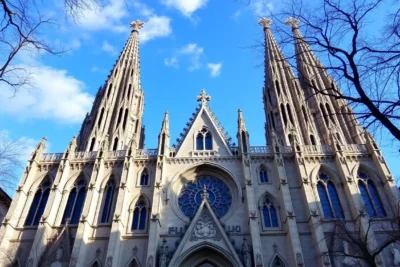

Read more!